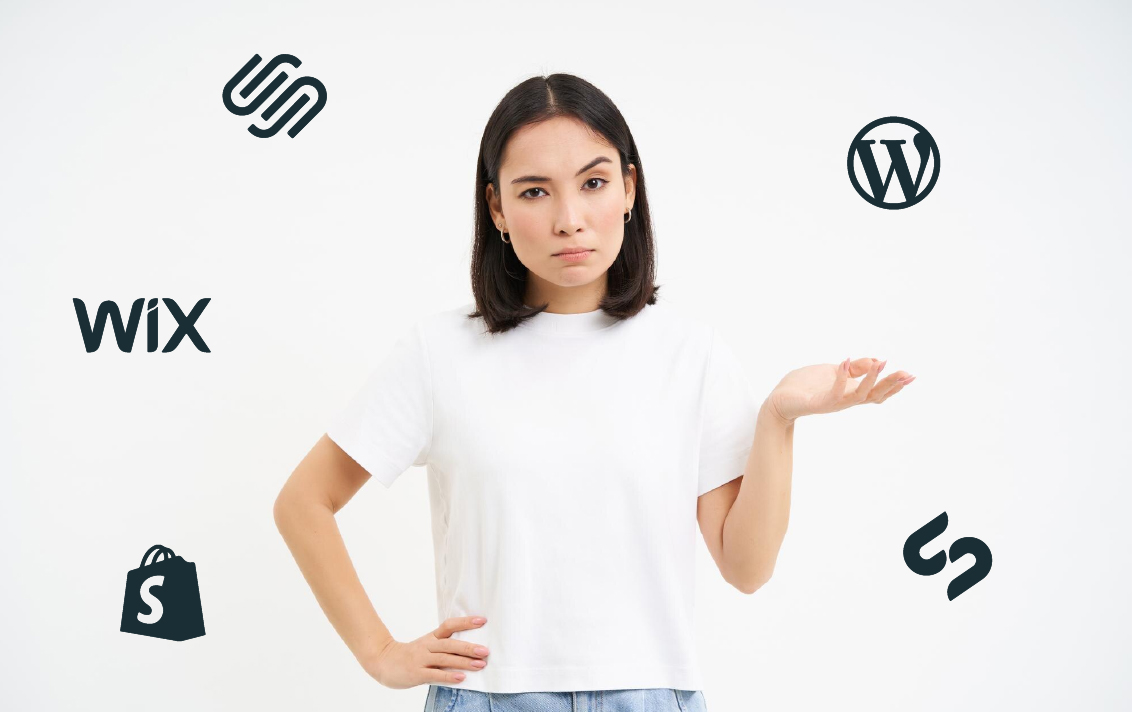
Web design price guide: What does a website cost in New Zealand
Apr 1, 2024For most businesses a website is a critical piece of it’s online reputation and service provision strategy.
Learn more
You Asked:
We Answer:
Often as a digital agency we get called in to help fix a web design project that has gone south. Knowing what to look out for at the start of your project will help you execute a new website and avoid the most common and costly problems to fix
Choosing the right Content Management System (CMS) for your website is one of the most important steps in the web design process. It directly impacts your ability to manage and update your site and if got wrong will drastically shorten the life of your website. The most common CMS options in New Zealand include WordPress, Shopify, Silvertripe, Wix, and Squarespace. Each has its strengths and weaknesses, so it’s important to match the features and capabilities of each CMS with your specific requirements and preferences. Here are key factors to consider when selecting a CMS:
WordPress is a versatile and widely-used Content Management System (CMS) known for its user-friendly interface and extensive features. This platform is perfect for businesses of most sizes. It comes packed with features to make your website easy to edit and can grow with your business over time. WordPress’s rich feature set, combined with its open-source nature, makes it a popular choice for many.
Shopify is a popular eCommerce platform also known for its user-friendly interface and comprehensive features. This is the perfect platform for those businesses who want to sell online (eCommerce) in NZ or overseas. It is a SAS product meaning maintenance of the platform is minimal and it is packed with features to help you sell more products. It’s also highly scalable. Shopify’s feature-rich platform makes it an excellent choice for businesses looking to establish and manage their online store effectively.
Silverstripe CMS is an open-source website content management system built right here in New Zealand! It offers a flexible and robust platform for building and managing websites. It is widely used by Government agencies on CWP (The Common Web Platform) and has a number of features that make it suitable for this type of website including version control for content revisions and rollbacks, providing a structured approach to content management and workflow management tools for collaborative content creation and approval processes. Its modular architecture, user-friendly interface, and scalability make it an attractive choice for developers and businesses seeking a flexible solution for their websites.
Wix and Squarespace are popular website builders that allow you to create websites without extensive technical skills. These platforms are popular among the ‘Do-it-yourselfers’ but they do have limitations you need to be aware of, this includes poor mobile responsiveness, data portability meaning you can’t move away to another platform easily and most users users have reported challenges in achieving high rankings in search engine results (SEO). While Wix is suitable for many users, those with more complex requirements or specific design preferences will want to explore other options. These platforms cater to users with varying levels of technical expertise, making it a popular choice for businesses looking to establish a web presence quickly.

Avoid themes that have these extensions. I could stop at that piece of advise and save you major headaches, however I will explain further.
A “bloated theme” refers to a website theme or template that includes excessive, unnecessary features, code, or elements, resulting in a larger and potentially slower website. These themes often come with numerous built-in functionalities, plugins, and design elements that may not be essential for every user. While these features can offer flexibility and convenience, they can also contribute to a range of issues:
Bloated themes include unnecessary scripts, stylesheets, and code, leading to longer loading times for web pages. This can negatively impact the user experience and SEO.
Themes with a large number of features and plugins have more potential security vulnerabilities. Outdated or poorly maintained elements can pose a risk to the overall security of the website.
Themes with excessive features are not always compatible with certain plugins or updates. This can result in conflicts and errors that become more challenging to resolve over time.
On the surface these page builders look like they might help you but they bloat the code, make your website slow to load and create ongoing issues like compatibility, support dependency making future updates difficult and code conflicts leading to unexpected behaviour or errors and finally you will suffer from the Lock-In Effect meaning once you start with these extensions It’s very hard to change. You should explore alternative page, we recommend WP Bakery.
Does anyone like a slow loading site? no! A fast-loading website offers several benefits, impacting user experience, search engine rankings, and overall website performance. Here are some key reasons why a fast-loading website is way better:
Fast-loading websites provide a smoother and more enjoyable experience for users. Visitors are more likely to stay on a site that loads quickly, leading to increased engagement and a positive perception of your brand.
Slow-loading websites often result in higher bounce rates, as users are more likely to abandon a site that takes too long to load. A fast website helps retain visitors and encourages them to explore more pages.
Faster loading times contribute to improved conversion rates. Whether your website’s goal is to sell products, generate leads, or encourage specific actions, users are more likely to complete these actions on a fast website.
Search engines, such as Google, consider page speed as a ranking factor. Fast-loading websites are rank higher in search engine results, leading to increased visibility and organic traffic.

Getting your website SEO (Search Engine Optimisation) right is a crucial part of any website project. Getting this wrong can have disastrous results, impacting a website’s visibility, traffic, and overall online success in New Zealand search engines. Here are the main things to consider as a baseline for SEO in your new website.
On-page SEO involves optimising individual pages to improve their visibility in search results. This includes optimising title tags and meta descriptions, using descriptive and SEO-friendly URLs, incorporating header tags (H1, H2, etc.), and ensuring proper use of images with alt text.
Compelling and informative meta titles and descriptions can significantly impact the click-through rate from search engine results pages (SERPs). When users see a title and description that accurately represent what they’re looking for, they are more likely to click on the link, leading to increased organic traffic.
Conducting keyword research and strategically integrating relevant keywords into various elements of your website, including titles, headings, meta descriptions, and content, will pay divendeds. This helps search engines understand the context of your pages and improves the likelihood of ranking for relevant search queries.
When you make changes to your website, such as altering URLs, restructuring content, or moving pages, redirects help preserve the SEO value associated with the old URLs. By redirecting the old URLs to the new ones, you ensure that search engines transfer the accumulated authority, relevance, and rankings to the updated pages.
PROP TIP: If you have really good SEO rankings prior to rebuilding an existing website you need to track the website throughout the re-build process using tools such as MOZ or Semrush. This will allow you to monitor closely any rankings drop or other SEO issues with your project.
If you have any questions about this article please drop me an email: adam@nzdigital.co.nz
NZ Digital are a Auckland based digital marketing agency, we offer a wide range of done for you digital marketing and lead generation services. If you have more questions or would like to book a FREE Digital Marketing consult please schedule a call with us.